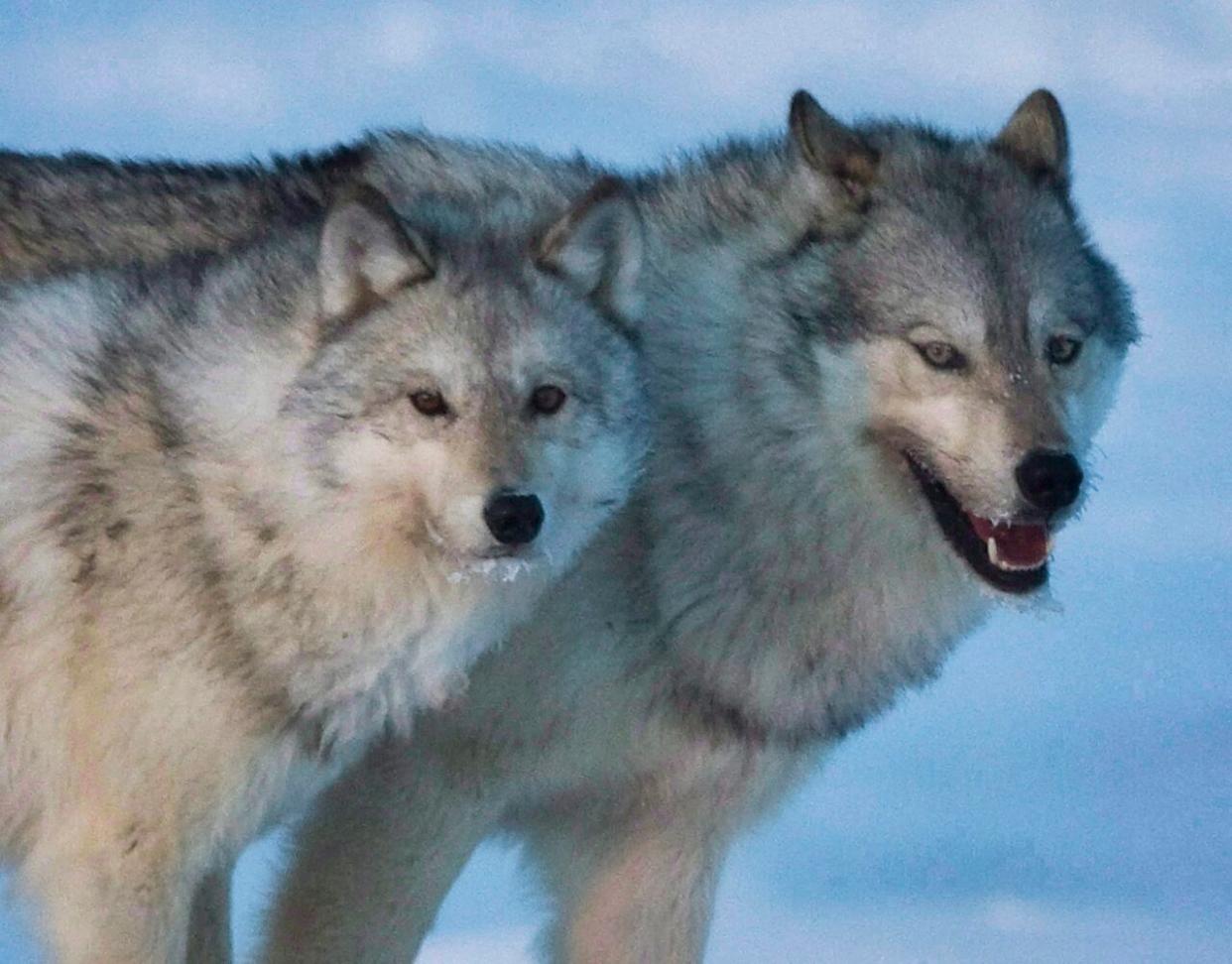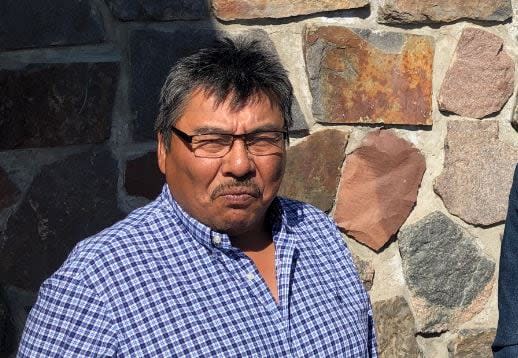Prey driven away by wildfire, YKDFN Chief says wolves are turning to Yellowknife for food

Wolf sightings have been "persistent" around Yellowknife, Ndilǫ and Dettah recently — and a chief with the Yellowknives Dene First Nation says it's because they've lost habitat in this year's wildfires.
Fred Sangris, the chief of Ndilǫ, said fires burned a lot of land in the region and drove away the wolves' prey. "The only food the small mammals can depend on, including the fox, is right here at the city dump and people's garbage," he said.
According to N.W.T. Fire, more than 4.1 million hectares of land burned across the N.W.T. this year, topping the previous record set in 2014. About a quarter of the land that burned was in the North Slave region.
Sangris said there isn't a big population of wolves in the area of Yellowknife, Ndilǫ and Dettah — but sightings are happening more often because they're hungry and venturing near communities in search of food. He also said wolves are travelling freely on the lake ice at this point in the season.
"The fox, the coyotes and the wolves can roam on ice. They'll go back and forth on ice. But once the ice is thick and the population of people start to go on [the] ice skiing, Ski-Dooing, whatever they're doing, then the animals will disappear," said Sangris.
"January, when the big weather comes, then they'll leave. They'll leave the area, they'll go inland. And then springtime, they'll be back again."
Signage and snares set up
A dog was reportedly mauled and killed by a wolf over the weekend, according to the N.W.T.'s Department of Environment and Climate Change (ECC). Sangris said he knows the family in Dettah who lost their pet.
"It's not a good thing for a wolf to come to your yard and take your pet," he said, adding the incident happened outside the family's home, and he's sure they're "hurting quite a bit."
ECC said the wolf responsible for killing the dog is believed to be a black one spotted travelling between Ndilǫ and Dettah. Mike Westwick, a spokesperson for the department, said in addition to that wolf, there have been "persistent sightings" at the sandpits area — a popular spot where people let their dogs run off-leash.
The department said it's been working with local hunters as of early this week to set traps for the "problem wildlife around the city."
In an email to CBC News on Tuesday, Westwick wouldn't say exactly where the snares and traps were so that they wouldn't be tampered with, but he said signage has been posted in the vicinity so that people know where to be mindful.
"Pet owners are responsible for being aware of their surroundings and keeping domestic animals leashed in order to ensure they are safe from danger. Our strong recommendation is for all dogs to be kept on-leash at all times as we experience this elevated wolf activity."
A lone wolf?
Sangris believes the wolf responsible for killing the dog is a lone wolf.
He said he saw a lone, black wolf himself last week.
"When you see a wolf like that, he's not going to go in the wilderness, do his own hunting. He's going to depend on your garbage and the city dump. And that's why he's around. It's a lone wolf. There might be other wolves around in the area that he may not join."

Fred Sangris, the chief of Ndilǫ, said there are more wolf sightings in the Yellowknife area because the animals lost their homes in this past summer's wildfires. (Mark Hadlari/CBC)
Sangris said Dene people have a special, interdependent relationship with wolves and caribou.
"We can't live without wolf," he said.
"When animals are sick, you know, the wolves take care of them … so the wolves are very good to have around. But too many wolves, it becomes a problem."
Sangris said the Yellowknives Dene hunt wolves when a situation "gets out of hand and when there's danger, when they start attacking your dogs and coming to your yard" — or when a pack has grown to be too big. A pack of more than 20 wolves, he said, starts to act like "a gang."
He said First Nation hunters wouldn't destroy all the wolves in such a pack, but would take a small number to communicate that the rest "need to go away, far far away."
"There's traditional knowledge that you use to tell the wolf to leave the area and they will go," he said.
Sangris wants people to remember Yellowknife is in a wilderness area, rich with wildlife. The animals came before the people, he said, and the fact there are so many animals is why the Yellowknives Dene made it their home.


